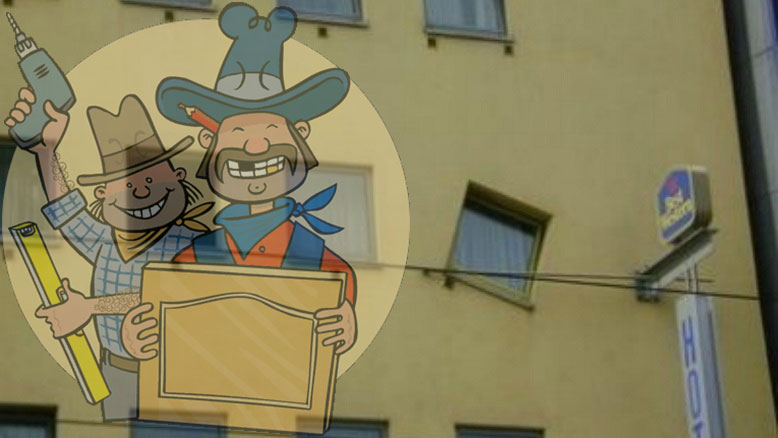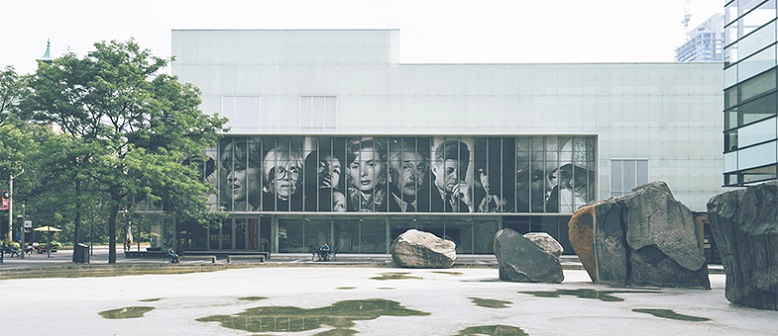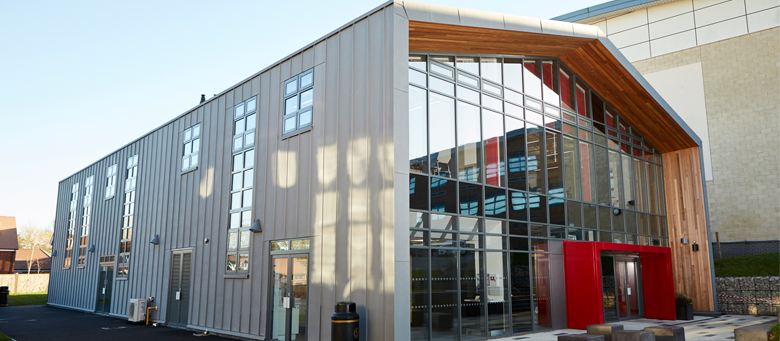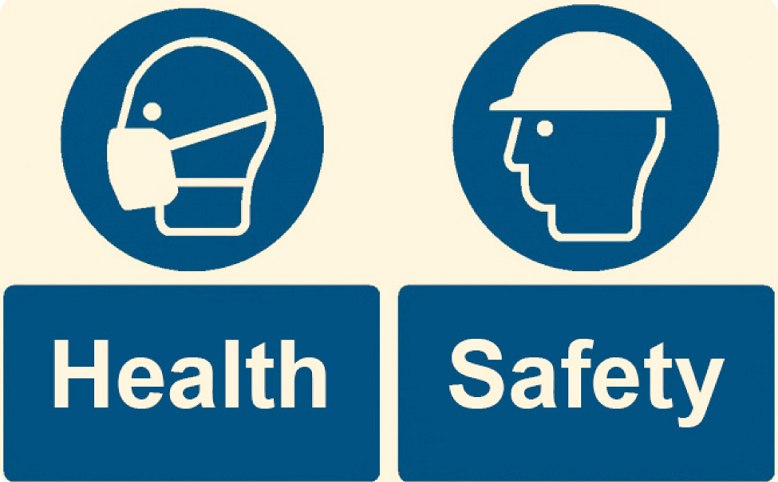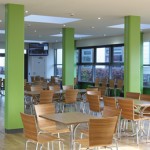Still gasping
Buildingspecifier considers the growing threat to indoor air quality, as well as ways in which it can be controlled and improved.
We frequently hear architects on property programmes referring to big windows “bringing the outside inside” as if they’ve just invented glass for the first time, but how much attention do designers pay to the fact that outside air is what we inevitably end up breathing while we are inside our homes or places of work?
While it might seem quite an amusing parallel to Ben Elton’s “Gasping,” to read of Leo De Watts, 27, selling air collected in the British countryside to the wealthy inhabitants of polluted cities such as Shanghai and Beijing for £80 a jar, the fact remains that air pollution in several areas of the UK is breaching EU safety limits. Alarmingly, 38 of Britain’s 43 air quality zones are exceeding EU safety limits for nitrogen dioxide (NO2) levels which will, inevitably, supply the air changes to our homes, schools, shops and public buildings.
Again we are told repeatedly that modern buildings are becoming more airtight, but as physicists have always stressed, “nature abhors a vacuum” so the tiniest change in pressure from inside to out will encourage airflow through all the tiny cracks and crevices which still exist around the building envelope. Even the Retrofit for the Future properties which were generally cocooned in Exterior Wall Insulation, or the super insulated PassivHaus buildings all still exhibit easily measurable air leakage rates at pressures of 50 Pascals.
As is the case with so many aspects of life in Britain, the agenda is being driven using targets set by Brussels, and as recently as last April the Supreme Court unanimously ruled that the Government should be taking immediate action to address infringement of health guidelines.
Law firm ClientEarth, which last year forced the Department for the Environment, Food and Rural Affairs (Defra) to come up with fresh plans to tackle illegal nitrous dioxide levels in British cities, warned that it would seek urgent court action because thousands of people’s lives could be being put at risk if present Government plans were not strengthened.
Not only are swathes of our cities failing European limits on harmful NO2 gases, which are mostly caused by diesel traffic, but the pollution is blamed for nearly 9,500 premature deaths each year in London alone; due to population densities and the number of people living or working near busy roads. According to Public Health England, the percentage of premature deaths attributable to micro particulates known as PM2.5s rose to 5.3% in 2013 in England from 5.1% in 2012. This death rate in London rose to 6.7% from 6.6%.
Under new plans revealed before Christmas, Defra promised Clean Air Zones for five cities by 2020 in addition to one already planned for London. In fact figures revealed that London’s Oxford Street had the worst NO2 levels in the world due to diesel buses; and one has to feel concern for the shop workers breathing in the fumes on a daily basis inside the buildings where most doors remain not just “open all hours” but all year. Hot air curtains might protect the indoor temperature, but not its quality. Furthermore it will still take at least five years to clean up pollution in many cities, including Birmingham, Manchester, Cardiff and Edinburgh.
The Clean Air Zones will be centred on areas of each conurbation where the air quality problem is most serious. These zones will aim to reduce the pollution in city centres by encouraging the replacement of old, polluting vehicles with modern, cleaner ones. Similar zones in Germany and Denmark have been shown to lead to an improvement in air quality. These zones will not affect private car owners, but will see the most polluting vehicles, like old buses, taxis, coaches and lorries discouraged from entering the targeted areas through imposing charges.
Furthermore, the Government’s scientific advisers on the issue, the committee on the medical effects of air pollutants, are expected to conclude later this year that across Britain up to 60,000 early deaths annually can be attributed to the main two pollutants (ozone and NO2).
The figure would represent a doubling on the current 29,000 from PM2.5s, and would put air pollution much closer on the risk list to smoking, which kills around 100,000 people a year.
It might be seen as ironic that smoking has actually been banned from most buildings – including bars, restaurants, shops, transport hubs and almost all workplaces – when deadly diesel fumes and other pollutants penetrate so many properties, but there are still plenty of measures which can be taken to improve indoor air quality overall.
Indeed there are numerous mechanical and non-mechanical products on the market which will help remove particulates, irritants, allergens and even noxious gases from the air that we breathe.
Interestingly, back in January, Waverley’s editorial team was invited to view the research and development facilities established by building services specialist, Zehnder at its premises in Camberley.
And although the main focus for the visit was the intriguingly named Flat 51 which forms part of the company’s comprehensive ‘visitor experience centre’; the press was also informed that the headquarters stands just a stone’s throw from a significantly large sewage farm. Happily you would never know from any smell inside the building, while the one bedroom apartment which serves as a testbed for some very sophisticated heating and mechanical ventilation systems, is actually named after the firm’s rigid ducting system.
As well as the Paul brand offered by Zehnder, specifiers could look to use one of the MVHR systems produced by Vent Axia, Polypipe Ventilation, Johnson and Starley, Nuaire or others. And of course these can be utilized in tandem with in-line filtration.
Alternatively, positive input ventilation (PIV) – again available from some of the above named companies – can be set to filter incoming air before blowing it into the occupied spaces. This has the benefit of forcing out moisture laden air and thereby helping to combat mould growth in areas like kitchens, bathrooms and bedrooms where it contributes to respiratory conditions.
Commercial air conditioning systems normally offer a big step up in standards of filtration from most domestic equipment, but arguably top of the tree are the type of clean-room installations required for medical laboratories, pharmaceutical production and other highly sensitive industrial facilities.
When raising the bar this high in terms of indoor air quality it is essential to call on expert design and build contractors, such as CDC who can advise on what are also sometimes referred to as aseptic suites. And of course those who work in such environments have to wear medical type garb to prevent their own skin cells contaminating the air.
Returning to domestic scale designs, a new ‘hermetic homes’ policy has been thought up by the Department for Communities and Local Government and is now being forced on councils. The hope is to transform Britain’s 1,400 square miles of air pollution zones back into land that is suitable for building. Developers are now being told that they will only get permission to build on specific sites around the country if they work to stop polluted air getting into the building – one way being to specify windows that cannot be opened, along with mechanical ventilation systems as outlined earlier.
One of these sites is right next door to the four-lane A23 Purley Way in Croydon, south London, which is set to house a primary school, to be finished this autumn.
The same site was abandoned as unsuitable for young children five years ago, when the previous education establishments there were closed and moved to a less polluted environment.
However the Harris Federation, sponsoring academy group, has already issued literature publicizing its intention to open on the Purley Way site in September 2016. The school insists it will be able to protect children with the locked windows and filtered air.
Perhaps we should leave the last work to Simon Birkett, founder and director of campaign group Clean Air in London, said it was “breathtaking [sic] that toxic air pollution in the capital had breached the legal limit for the whole calendar year within the first few days of 2016.” He continued: “Worse, several air pollution monitors have been vying for the dubious honour of recording the first officially monitored breach of the NO2 legal limit in the world in 2016. Put simply, diesel exhaust is the biggest public health catastrophe since the Black Death”.





